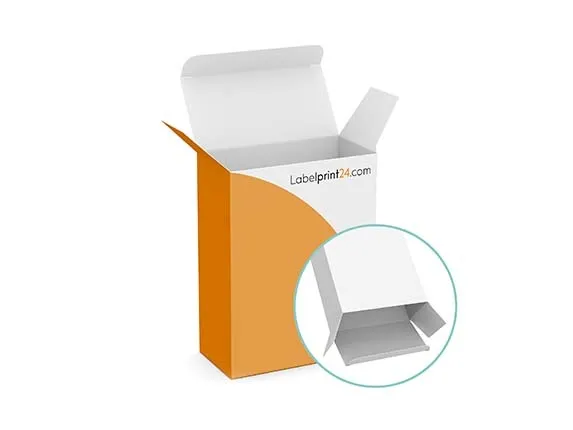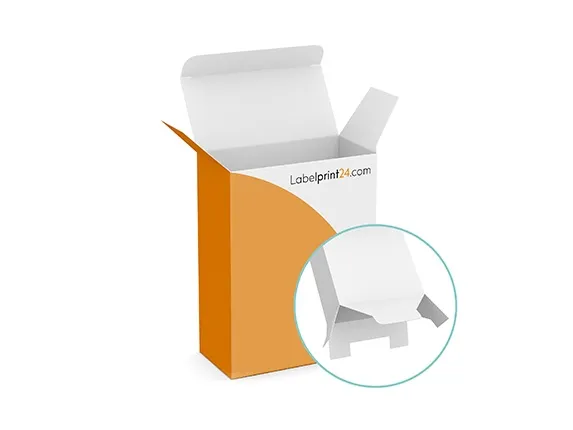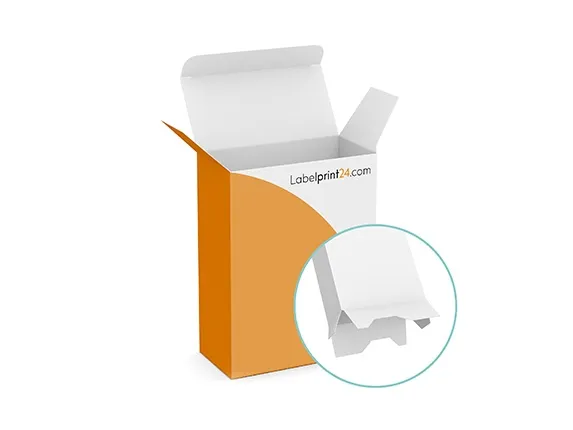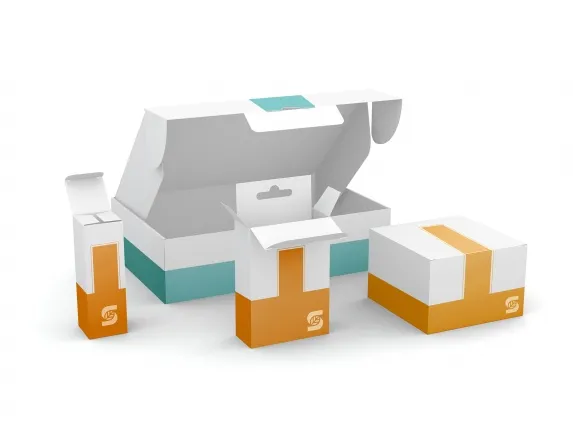
Accessibility through die-cutting - how Braille is printed
The tactile writing system invented by Louis Braille, which is still in use today, is referred to as Braille. It is based on a system of raised dots. The coded information is embossed on paper or packaging using a special Braille printer. For various applications such as medicine packaging, labelling in Braille with important information is required by law.
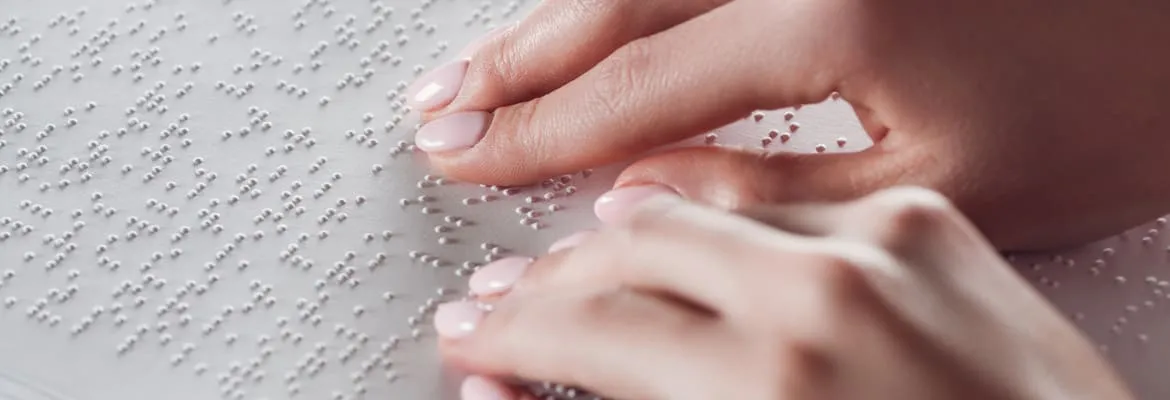
Reading with your fingers - thanks to Braille, has been possible since the 19th century. Originally developed as a secret code, braille, invented by Louis Braille, has established itself as the braille used worldwide.
There are special Braille printers and professional printing systems for printing Braille, which stamp the dot-based writing system onto paper or printed packaging.
Definition: Compulsory labelling to reduce everyday barriers
The stamping of Braille is not only a significant step towards more accessibility from a literary point of view. Printing Braille on packaging also helps blind people to better orient themselves and obtain information.
Particularly in the case of packaging for medicinal products, special labelling obligations apply - including in Braille. For example, according to § 10 para. 1b of the German Medicines Act, the specific designation of certain medicines has had to be included on the packaging since 2006.
For products from the food, cosmetics and animal feed sectors, there are corresponding obligations to label in Braille. Product packaging containing hazardous substances - regulated by a European standard - must be printed with tactile warning triangles for labelling hazardous substances.
These markings are intended to reduce everyday barriers for visually impaired and blind persons.
Braille printers for different users and applications
Printing Braille has been possible in high-quality form for some time. Specified printing systems - the Braille printers - put the dot code on paper. Compared to classic printers with inkjet or laser printing systems, however, the entire printing process is based on a different technical system.
This is because a braille printer does not print in the conventional sense, but punches the braille characters onto a special paper. The paper used for printing braille usually has about twice the grammage of classic typewriter paper.
The printers are available in different quality and price classes and for different application scenarios.
- For the private sector, there are smaller dimensioned Braille printers equipped with handy single-sheet feeders.
- For larger print runs, systems for double-sided printing are suitable for continuous paper. This saves both time and paper.
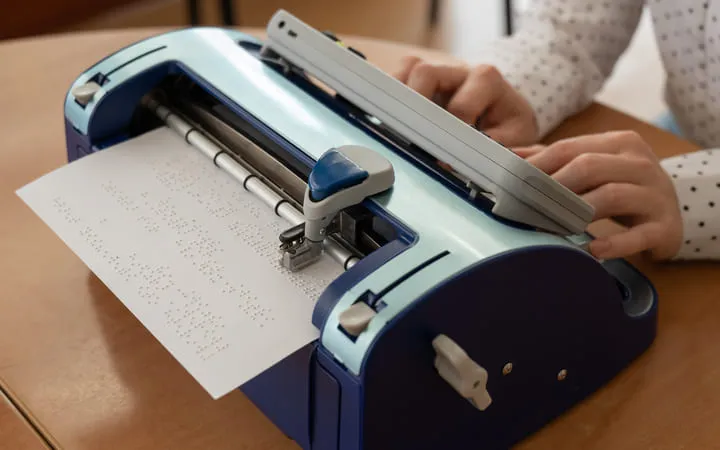
Discover our folding boxes for corporate clients
This is how printing text for the blind works from a technical perspective
The corresponding templates for printing Braille can be created via computer in blackletter, which is then converted into Braille by special application software. The entire process, including the control of the printer, is computerised.
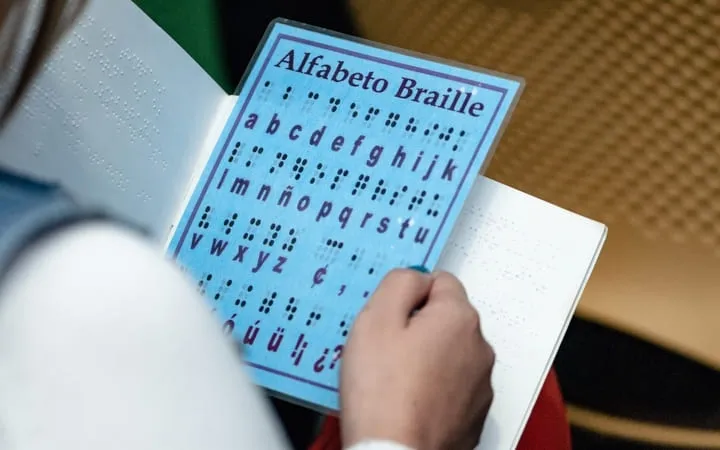
- First, all documents to be printed are transferred digitally from a computer to the Braille printer.
- There, the printing unit is fed with the corresponding data.
- Based on the transmitted data, the respective Braille printer then embosses the dots of Braille. To do this, the printing system uses its own tools and positions needles or "hammers" in exactly the right places, which mechanically punch the individual dots into the paper. The mechanical stress is extremely high. To compensate for this, thicker and more stable paper is generally used in the braille printing process.
Functional diversity: What should be paid particular attention to in a brow print?
In many cases, these special systems are very noisy compared to conventional printers. This is due to the working noise of the integrated embossing or punching tools.
The spectrum of braille printers ranges from portable, foldable tabletop devices for printing short braille texts on one side to continuous printers for intensive use to large devices equipped with several controllable high-speed printing units and integrated modules for binding and cutting work.
At a glance - the most important criteria for printing braille
Single or double-sided printing:
Some, usually cheaper, braille printers are equipped with printing units that can only print on one side of the braille paper. The system is comparatively simple, whereas machines for double-sided printing are far more complex.
This is mainly due to the higher technical demands: in this case, the dots on the front and back must be embossed offset from each other to avoid dents caused by punching in the sheet.

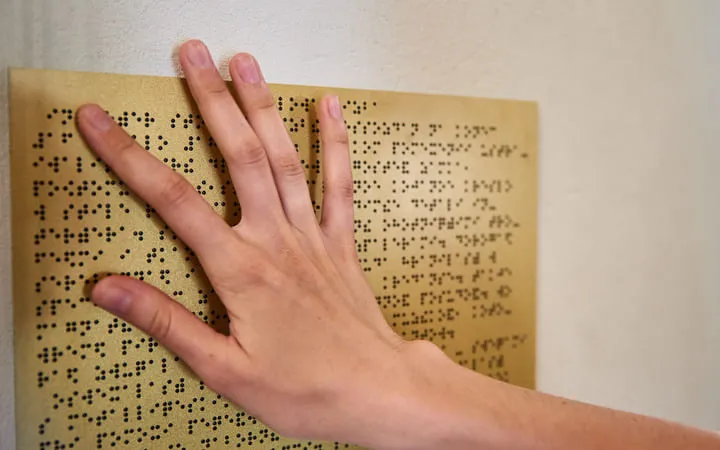
Possible paper formats:
Braille characters have a much larger point and character spacing compared to blackletter characters. For example, if the character size in blackletter is 10 to 12 pt, a braille character has a size of about 29 pt. For this reason, correspondingly larger formats are often used when printing braille.
How large the formats can ultimately be depends on the design of the printer. Less expensive models usually support larger paper formats only to a limited extent or not at all.
Use of single sheets or continuous paper:
More complex printers for continuous paper have sprocket wheels that engage with the paper edge perforations. This allows the paper to be forwarded via a tractor as required. This is mechanically easier to realise than paper processing by means of a cut-sheet feeder.
This is because with these printer variants, the design must be specifically geared to the higher dead weight and the greater paper thickness of Braille paper.
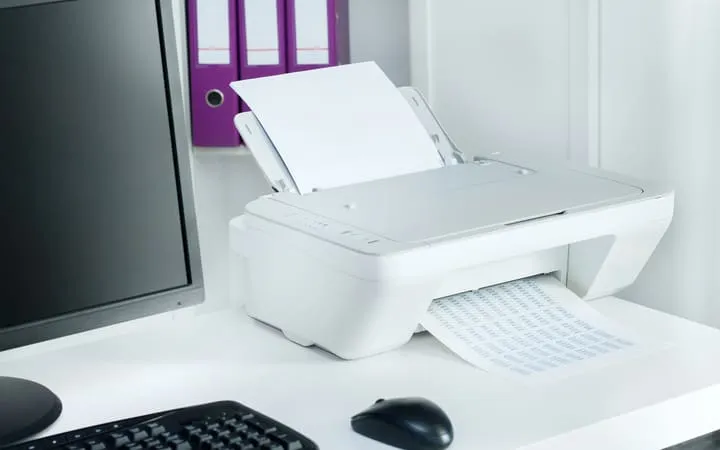

Printing speed:
From a physical perspective, mechanical embossing of dots is significantly more time-consuming than the application of toner or ink in blackletter printers. This additional effort is also reflected in the printing speed.
Experience shows that the embossing speed of braille printers is between 13 and 30 characters per second, depending on the model. This means: to print a braille sheet (28 lines of 30 characters each), a printing time of between 30 seconds and one minute must be planned.
Conventional printers are much faster here. In addition, the braille characters require much more space, which also significantly increases the number of pages of complete texts.
Possible representation of graphics:
To print dot matrix graphics, it is not enough to simply line up Braille characters in a sensible and clever way. Instead, printing graphic elements requires that all dots in the graphic have the same vertical and horizontal spacing between them. This eliminates the character and line boundaries.
Not all Braille printers have the technical capabilities to use this type of printing. Even printers with graphic capabilities for braille can sometimes have problems. The sticking point here is the spacing with which the graphic dots are printed or embossed. The standard dot pitch in literary braille printing is around 2.5 millimetres, which leads to a rather low tactile resolution of only around ten dots per inch when printing.
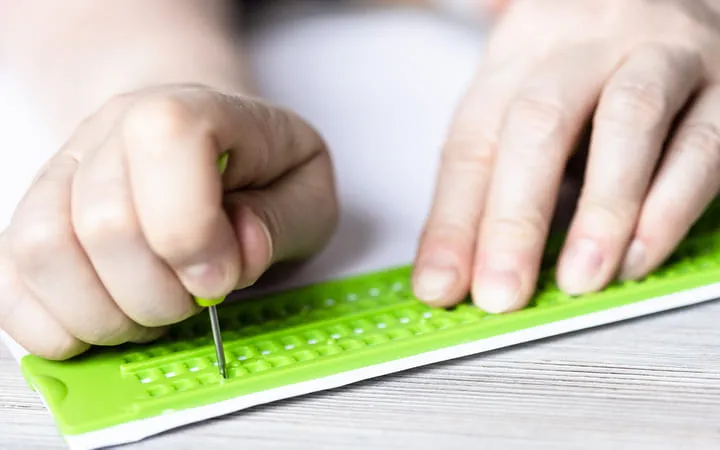
The history of Braille - it all began with a momentous accident
The French blind teacher Louis Braille (1809 to 1852) invented and developed Braille. He used six dots as a basis for the structure of the script. From this, he developed a complex system with which each individual letter of the alphabet could be represented with different dot formations.
Louis Braille had an accident at the age of three, as a result of which he suffered from sympathetic ophthalmia. Two years later he was completely blind. Despite his limitations, he nurtured a great interest in literature. Reading aloud alone was soon no longer enough for him. He wanted to experience literature in the same way as people with normal sight. At the age of just 13, Braille began working on Braille out of this impulse.
Louis Braille completed his braille at the age of 16.
As a basis for his particular writing system, he mainly used the night writing developed by the French captain Charles Barbier. This was a secret code in which the letters and syllables were represented with tactile dots.
This script was originally developed to help French soldiers read messages and orders at night. In practice, however, this did not work as desired because the system was too complex.
It was precisely at this point that the still young Louis Braille pulled the lever and simplified this system. He reduced the code to six dots in order to represent the different letters accordingly. With the help of this so-called binary 6-bit coding, his system comprised a total of 64 different characters. In addition, Braille introduced a special character that also made numbers legible as dots. At the age of just 16, he finally completed his Braille in 1825.



